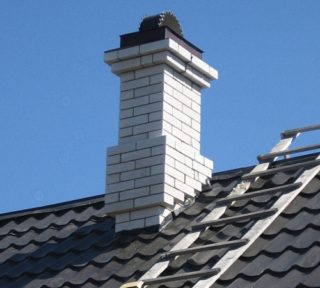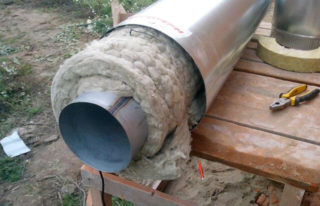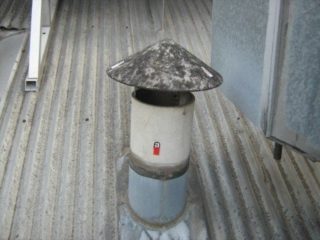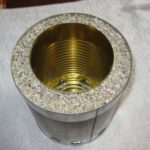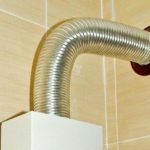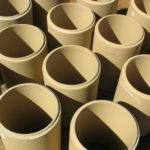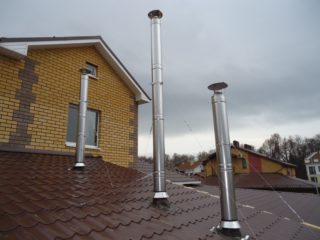The installation of stoves and fireplaces requires the creation of a smoke removal system. To build a chimney, you need to choose the right pipes, and also observe a number of nuances for safe and operation. Incorrect calculations can lead to reduced heat transfer and accidents.
Chimney design requirements
The main purpose of the chimney is the removal of gases outside the house. In order for all harmful substances to be removed effectively, it is necessary to properly equip the chimney channel, and also correctly calculate the height, section and configuration of the pipes.
According to the requirements of SNiP, when installing two boilers or furnaces, it is possible to install one chimney. A professional stove-maker should deal with its calculation and installation in order to comply with all conditions of safe operation.
According to building codes, when creating chimneys, pipes need to use the following rules:
- The length of the pipe from the grate to the upper point must exceed 5 meters. This rule can only be violated in buildings without attics and with stable forced traction.
- The distance from the metal chimney to the structure of combustible materials should be one meter or more.
- The maximum horizontal branch length is 1 meter.
- All places of passage of the chimney must be made of non-combustible materials.
- The metal parts of the pipes are connected using sealant with a working temperature of over 1000 ° C.
- The minimum elevation of the chimney above a flat roof is 50 cm.
- A non-brick chimney with a height of 1.5 meters or more is necessarily strengthened with braces and braces.
- Slopes and horizontal sections reduce traction. All bends and offsets should be done at an angle of up to 45 °.
Based on these rules, a chimney plan is created.
Material selection
Arrangement of laying a chimney for the stove can be performed in several ways:
- With passage through the attic and roof. Then all floors must be made of fireproof material.
- With the conclusion of the walls and exclusively inside the building.
- With the transition through the upper roof past the floors.
- Based on a boiler or stove. Wall mounting is also possible.
The selection of the optimal configuration depends on the layout of the house, the place of installation of the heating system, the individual features of the structure. The best option will help you choose a specialist. Next, you need to choose pipes for the chimney.
The smoke outlet can be made of brick, iron and asbestos pipes for furnaces, ceramics, concrete, heat-resistant glass. Installation of all types except glass can be carried out independently. The section is round or square with different diameters.
Brick
A chimney made of baked brick is the best option for a potbelly stove. These are traditional designs that have been performed for more than a century. They perfectly perform their functions and effectively remove smoke from the room. A brick chimney must be created along with the construction of a dwelling and a separate foundation must be poured for it. For work, a high-quality solid well-fired brick is selected. Porous structures can leak hazardous gas.
The advantages of a brick chimney for a metal furnace include fire safety, a stylish appearance, a well-studied design, long-term operation and additional heat transfer.Disadvantages - high price, high weight and the creation of a separate foundation.
Brick is used primarily for installing solid metal fired furnaces. They are made mounted in the form of a separate vertical branch and wall, which are placed inside the supporting wall.
Galvanized and stainless steel
These materials are resistant to the formation of rust and the influence of aggressive environments, which are formed when condensate and gas are combined from the furnace. They are lightweight, so installation does not require the construction of an additional foundation.
The following types of furnace steel pipes are on sale:
- Single-walled. Represent one layer of steel without thermal insulation. It is necessary to additionally insulate during the installation process.
- Double-walled. Between the sheets of steel there is a heater.
A steel chimney needs to be insulated, since heat loss and condensation reduce efficiency. The cost of the entire system will be less than when laying a brick or ceramic counterpart.
Stainless steel chimneys and chimneys consist of the following parts:
- rain hood;
- tees;
- the knee;
- straight pipes;
- condensate collector.
To make a pipe for the stove, it is necessary to connect all the parts to each other. The joints are treated with heat-resistant sealant. Steel pipe can be used for almost all types of furnaces and raw materials.
Asbestos cement
Pipes made of natural asbestos are characterized by low cost and durability. They began to be used back in Soviet times. Initially, the material was not intended to create a chimney due to its fragility and instability to high temperatures. Asbestos pipes also have a rough inner surface on which soot settles. It is difficult to clean it, and if this is not done, there is a risk of fire and explosion. Also, under the action of condensate and vapors, asbestos is destroyed over time.
Channels of chimneys made of asbestos are carried out in the mounted version. The best option is the vertical arrangement of all elements. All inclinations are made by pipes made of non-combustible materials.
Ceramics and Concrete
Ceramic chimney is durable and high cost. Such devices do not overheat and are resistant to soot aggressiveness and corrosion. The walls are smooth, so condensation and soot do not accumulate on them.
During installation, the chimney is assembled, like steel devices. The difference lies in the need to form a box of expanded clay concrete. Thanks to the box, fire safety is significantly increased. Fire in such chimneys does not occur. The weight of this design is small, but the foundation is still required.
Concrete bases are more massive. Such installations are practically not used due to the complexity and complexity of installation.
Vermiculite and perlite pipes
The design is a sandwich chimney. In this case, the classic mineral wool insulation is replaced with refractory material.
The positive qualities include:
- minimum weight;
- moisture resistance;
- resistance to acids and corrosion;
- resistance to extreme temperatures.
Compared to classic sandwich structures, these types of chimneys are cheaper and able to work for at least 25 years.
Aluminum and steel corrugated pipes
Aluminum circuits are less resistant to elevated temperatures. They can not withstand more than 110 ° C; therefore, they are used as household air vents of hoods or chimneys of gas fireplaces. Corrugated stainless steel pipe for chimney tolerates high temperatures.
Corrugated pipes have the following advantages:
- The ability to set the desired direction due to the flexibility of the structure.You can easily connect the sections at right angles.
- Fill up an old brick chimney.
Corrugated products are used infrequently. This is due to the short service life compared to peers.
Plastic
Heat-resistant plastic pipes are also actively used for the extraction of stoves and condensing or gas boilers. They can also be used to sleeve a brick chimney in areas where the temperature does not exceed 200 ° C. The material is not susceptible to corrosion, has smooth walls and is easy to install. Plastic pipes are inexpensive.
- Vermiculite
- Plastic
- Corrugated pipe
- Ceramic pipe
Common mistakes
Experienced craftsmen erect structures without any special difficulties and in accordance with all the rules. Beginners can make typical mistakes, which include:
- Wrong choice of height and thickness of the chimney pipe. This is one of the most popular mistakes. If the length is too long, excessive draft is created, which increases the likelihood of smoke being drawn into the furnace. The optimum pipe size is 5-6 meters, depending on the size of the combustion chamber and the configuration of the chimney channel.
- Bringing the chimney to excessive hypothermia or too much heat. Both cases can lead to destruction of the pipe.
- Lack of condensate drain. To collect excess moisture, special collectors are used and a hatch for inspection is inserted into the pipe.
- Wrong choice of steel. The chimney for the furnace warms up to an average of 500 ° C, but for a short time the temperature can increase to 1000 ° C. Heating is uneven, so the material must be resistant to such changes. Steel should be heat resistant, the pipe should be insulated after 2 meters from the furnace to prevent overheating.
- The vertical offset of masonry bricks. This reduces the efficiency of the chimney, since in this structure flow swirls and soot deposits will form.
- Creating an unreliable foundation for a brick chimney. Poor design can lead to partial or complete destruction of the pipe.
Reliable and high-quality chimney can be made of different materials. Their choice depends on the features of the design and the room. The easiest way is to make a chimney made of steel, cheaper - from brick. If you need to make a durable design, choose ceramics.


